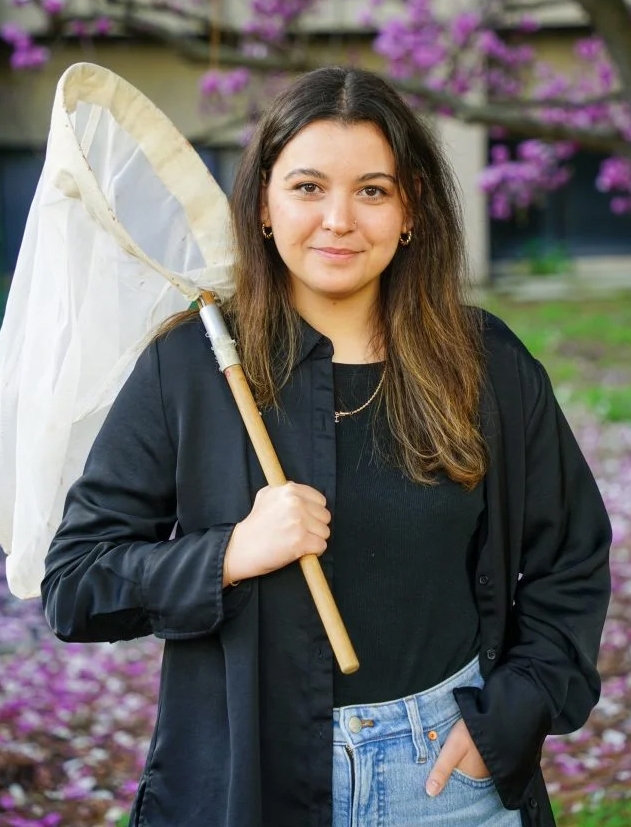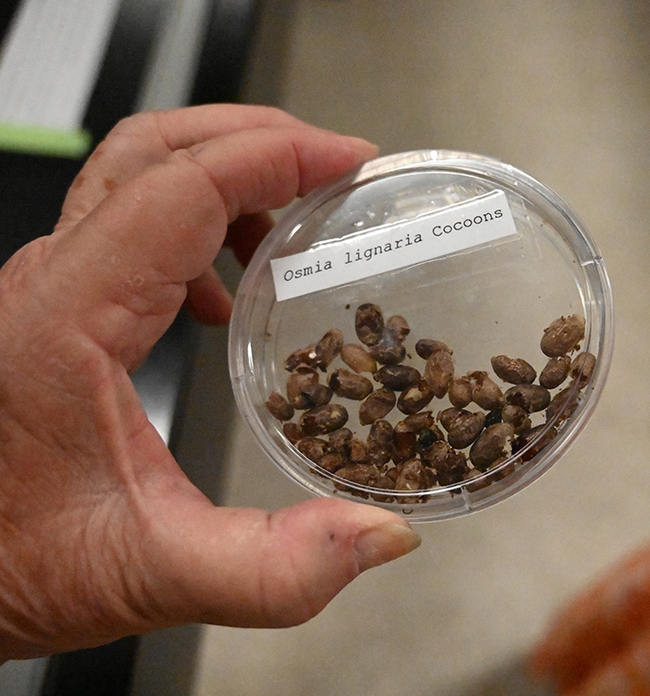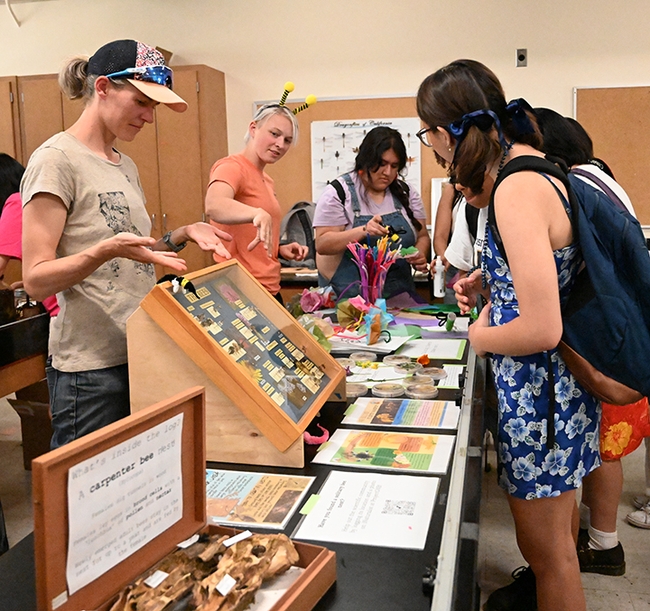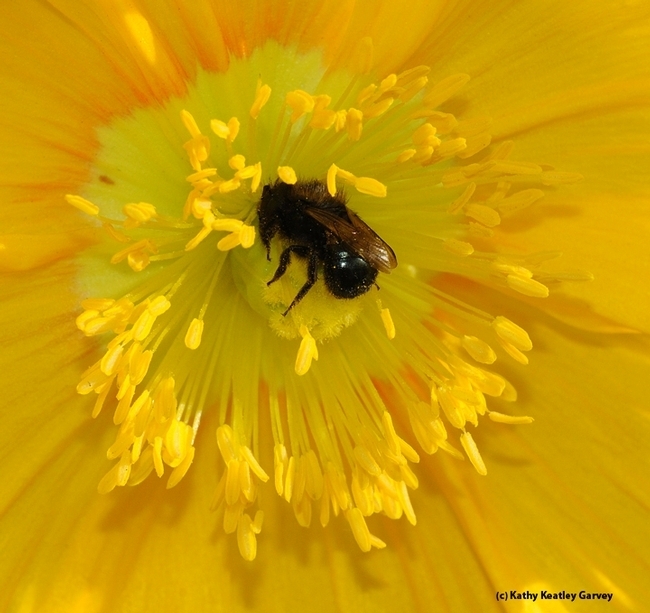
Free and family friendly, the open house takes place from 1 to 4 p.m. in Room 1124 of the Academic Surge Building, 455 Crocker Lane, UC Davis campus.
"It should be a great event!” said Tabatha Yang, education and outreach coordinator. “There is a lot of interest in bees this time of year. The format will be tabling with direct conversations with visitors.” The event is free and family friendly. Parking is also free.
Among those participating will be the laboratory of community ecologist Rachel Vannette, associate professor and chair of the UC Davis Department of Entomology.
"At the Vannette Lab booth, you will be able to look into the life of a bee--both in terms of where they live and how they develop!" said doctoral candidate and researcher Lexie Martin. "A live bumble bee nest and solitary bee nests will be available, so you can peer inside a bee's house! Additionally, there will be live bee larvae to observe under a microscope and interactive displays on the bee life cycle."
Vannette describes her lab as "a team of entomologists, microbiologists, chemical ecologists, and community ecologists trying to understand how microbial communities affect plants and insects (sometimes other organisms too). We often study microbial communities in flowers, on insects or in soil. We rely on natural history observations, and use techniques from chemical ecology, microbial ecology and community ecology."
Vannette's lab members participating at the open house will include:
Lexie Martin, doctoral candidate in the Entomology Graduate Group. She is interested in the impact of microbes on bee health
Dino Sbardellati, doctoral student in the Microbiology Graduate Group. He is a microbiologist interested in understanding how microbial ecology shapes macroscale ecology
Leta Landucci, a junior specialist and biochemist. She is inspired by chemical ecology, and broadly interested in exploring chemically mediated plant-insect-microbe interactions

Others scheduled to participate are Bohart Museum scientists and bee specialists Thomas Zavortink and Sandy Shanks; doctoral student Sofía Meléndez Cartagena of the Stacey Combes lab, Department of Neurobiology, Physiology and Behavior (she will focus on local bee diversity); Chancellor's Fellow Santiago Ramirez, associate professor, Department of Evolution and Ecology, who studies orchid bees; doctoral student Peter Coggan of the Ramirez lab (Coggan studies the neurological and genetic basis of orchid bee courtship behavior and evolution); and Richard Martinez, entomology graduate student researcher in the lab of apiculturist Elina Niño,associate professor of Cooperative Extension, UC Davis Department of Entomology and Nematology.
Martinez says that the E.L Niño Lab booth will display an observation hive and offer honey tasting from a variety of floral sources. He will be sharing recent projects aimed at improving honey bee health via dietary supplements. He also plans to showcase beekeeping suits and hive tools.
UC Davis distinguished professor emerita Lynn Kimsey, who directed the Bohart Museum for 34 years, is also scheduled to participate. She is known as "wasp woman," but she did her dissertation on orchid bees in Panama.
The Bohart Museum houses a global collection of eight million insects, plus a live petting zoo, and a gift shop. Professor Jason Bond directs the museum as of Feb. 1, succeeding UC Davis distinguished professor emerita Lynn Kimsey, who served 34 years. Bond is the Evert and Marion Schlinger Endowed Chair of the Department of Entomology and Nematology, and the associate dean, UC Davis College of Agricultural and Environmental Sciences. He also serves as president-elect of the American Arachnological Society.
For more information, access the website at https://bohart.ucdavis.edu or contact bmuseum@ucdavis.edu.
Attached Images:

UC Davis community ecologist Rachel Vannette (foreground), associate professor and vice chair of the UC Davis Department of Entomology and Nematology, answers questions at the UC Davis Picnic Day. In back is doctoral candidate Gillian Bergmann, who is advised by Vannette and Johan Leveau. (Photo by Kathy Keatley Garvey)

Bees in the genus Osmia are among the bees that the Rachel Vannette lab studies. (Photo by Kathy Keatley Garvey)